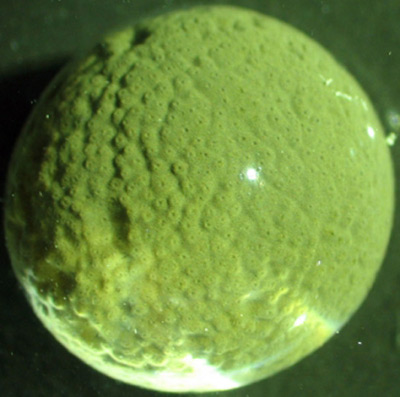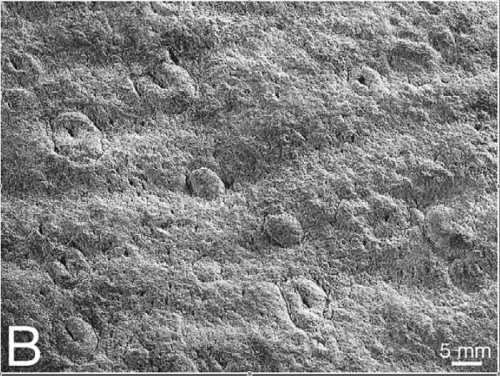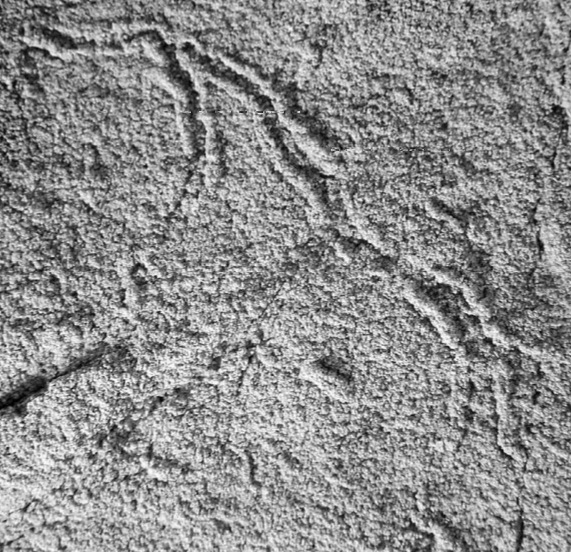Remember those controversional macro- and trace fossils from the 2 billion year-old Stirling formation? They seemed to offer the intriguing possibility that multicellular life may have popped into being far earlier in Earth history than is generally supposed. However, this rather interesting story from Discovery News suggests that we may be doing the distant ancestors of our single-celled brethen a slight disservice when we assume that they didn’t come up with a few neat tricks in the couple of billion years that they had the planet to themselves:
A distant relative of microscopic amoebas, the grape-sized [up to 3cm across] Gromia sphaerica was discovered once before, lying motionless at the bottom of the Arabian Sea. But when Mikhail Matz of the University of Texas at Austin and a group of researchers stumbled across a group of G. sphaerica off the coast of the Bahamas, the creatures were leaving trails behind them up to 50 centimeters (20 inches) long in the mud.
The article then segues into some typical breathless blather about the ‘Cambrian Explosion’. It’s true that this could somewhat muddy the interpretation of the earliest trace fossils that appear in the late Neoproterozoic (in that they may not necessarily herald the widespread appearance of multicellular organisms), but the fossil record still shows that the diversification of large body forms and the appearance of at least partially mineralised shells and carapaces (see also here) over a good few tens of millions of years at the end of the Cambrian. This is really only explosive in the context of very little apparently happening in the preceding couple of billion years.
More interesting was the reference to the Stirling Range fauna in the final paragraph: Matz reckons that the discoidal fossils described by Bengotson et al. closely resemble what a fossilised G. sphaerica (or its great to the power of lots grandfather) would look like. You can form your own conclusions about that from the pictures below.


Also, although it’s not mentioned in the article, it casts a whole new light on those problematic trail-like structures in the Stirling Range formation as well. Could this:

be a record of this?

Either way, it does encourage caution when studying controversial Precambrian fossils and fossil traces – they may be a window into a much more complex than generally supposed Precambrian ecology, but it’s not necessarily a multicellular one.



Comments (1)